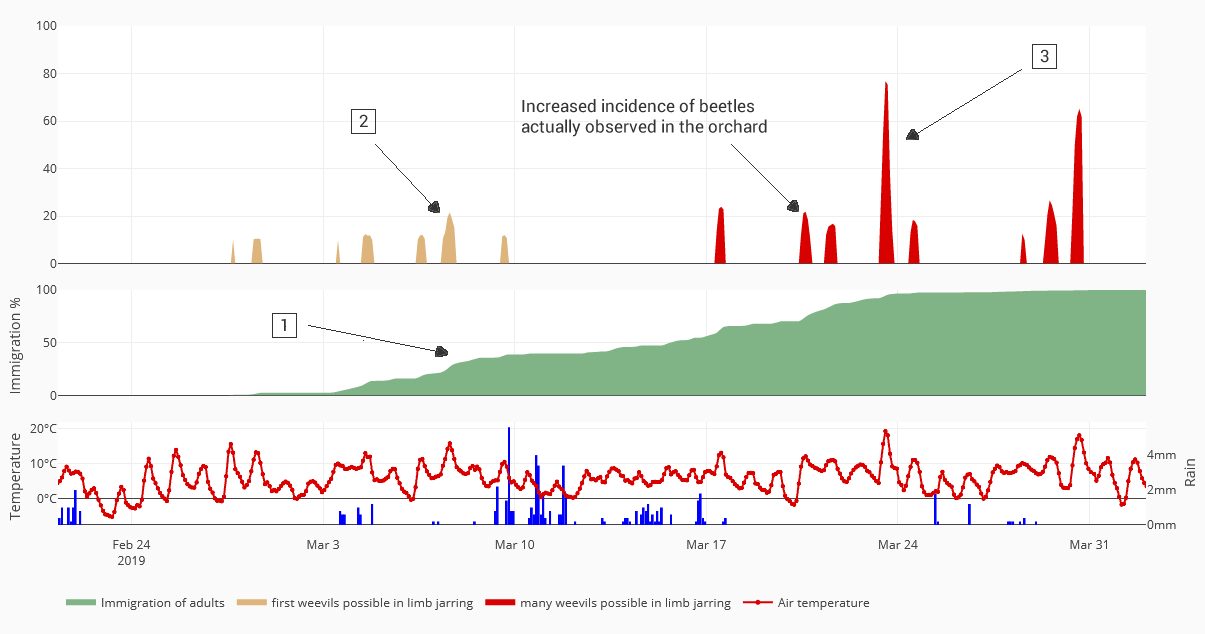fruitweb model Apple blossom weevil
This model of the apple blossom weevil (Anthonomus pomorum) was created from observation data of several years from 4 German fruit-growing regions (Altes Land, Brandenburg, Neckar and Lake Constance).
In the model 3 different statements are made:
- Temporal course of the immigration of adult beetles into the plant:
It should be noted that this is only a rough estimate. The background is that the speed of immigration depends not only on the weather, but also on local conditions (proximity to hedges and forest edges, exposure, etc.). - First weevils can be found in the tapping sample:
At temperatures above 10°C, weevils can be found in a limb jarring test. However, an increased occurrence is not yet to be expected. - Increased numbers of weevils can be found in a limb jarring test:
The red bars indicate that increased weevils may now be found in the limb jarring test. The warmer it is on such a day, the higher the red bar. However, it can NOT be concluded from this that the day with the highest red bar is automatically also the day with the most beetles. In the example shown from 2019 at the station Nuhnen (Brandenburg), for example, it was 20.3.19 (2nd red bar) on which an increased occurrence was observed for the first time!
On days with red bars, it is therefore generally advisable to carry out tapping samples in the orchards.
Literature
C. Hausmann, J. Samietz & S. Dorn (2004) Monitoring the dynamics of orchard colonisation by Anthonomus pomorum in spring, The Netherlands Entomological Society Entomologia Experimentalis et Applicata 110:207– 216, 2004
C. Hausmann, J. Samietz & S. Dorn (2005) Thermal orientation of Anthonomus pomorum (Coleoptera: Curculionidae) in early spring, Physiological Entomology (2005) 30, 48–53
S. Toepfer, H. Gu & S. Dorn (2002) Phenological analysis of spring colonisation of apple trees by Anthonomus pomorum, The Netherlands Entomological Society Entomologia Experimentalis et Applicata 103:151–159, 2002[/vc_column_text][/vc_column][/vc_row]

